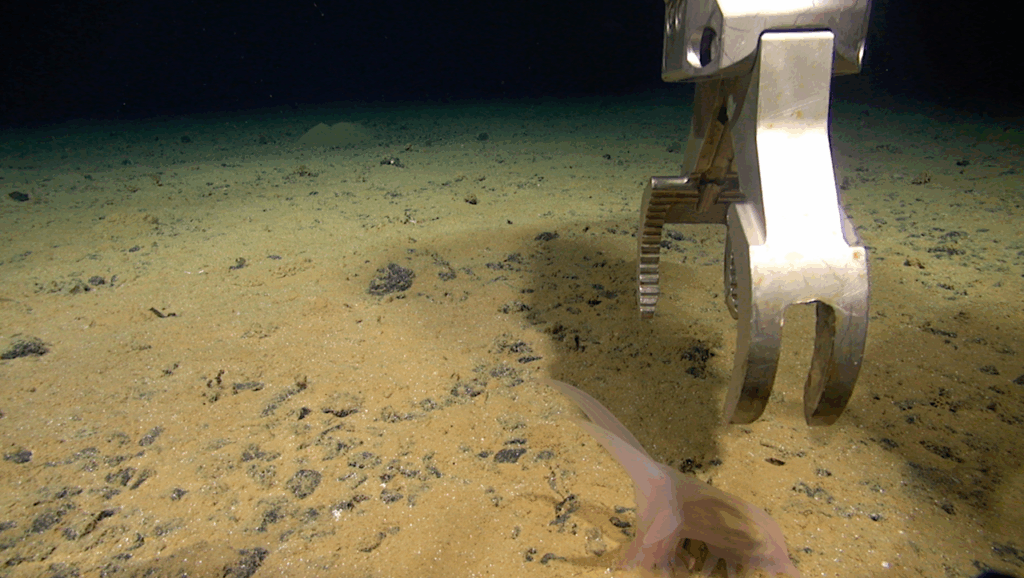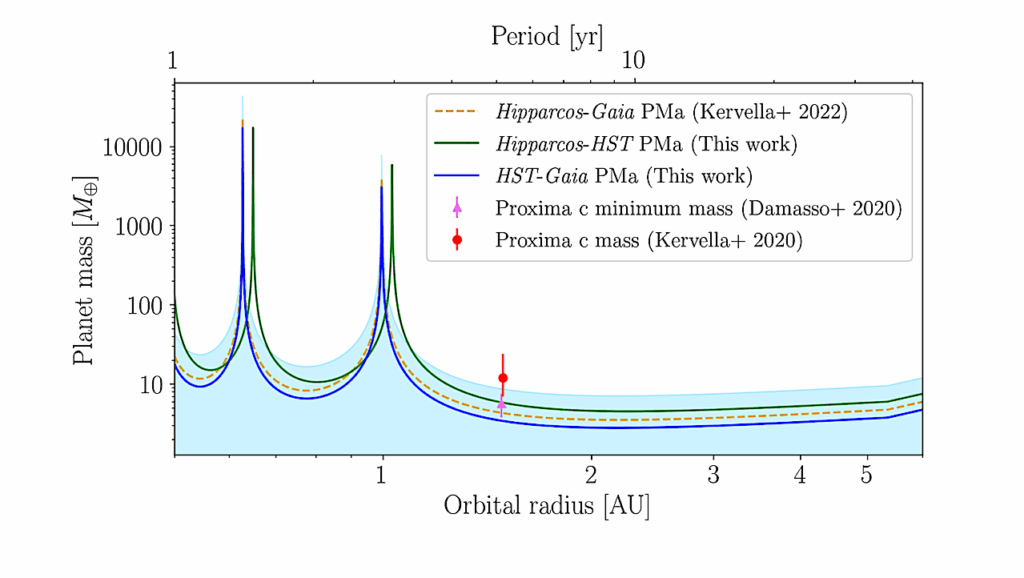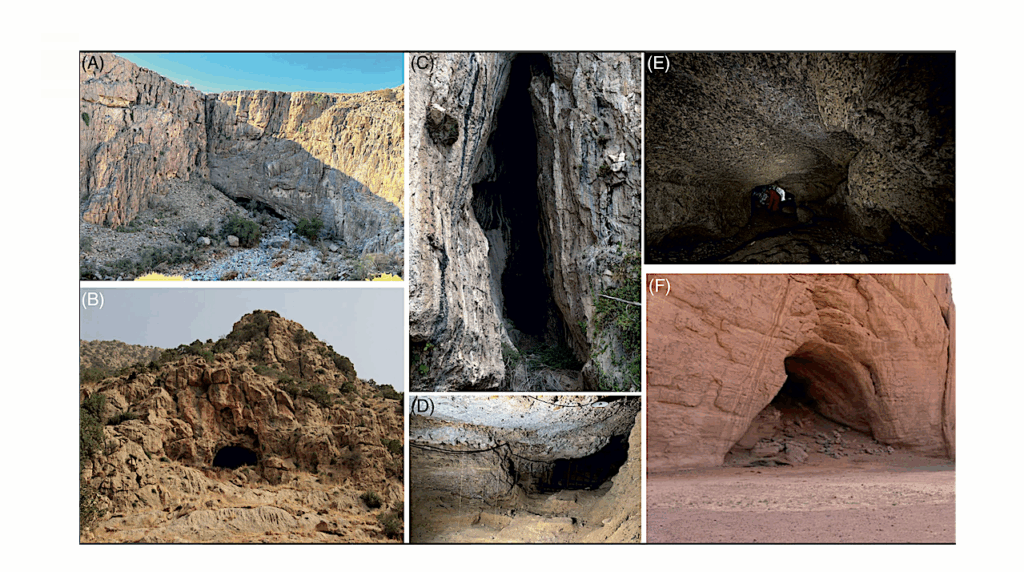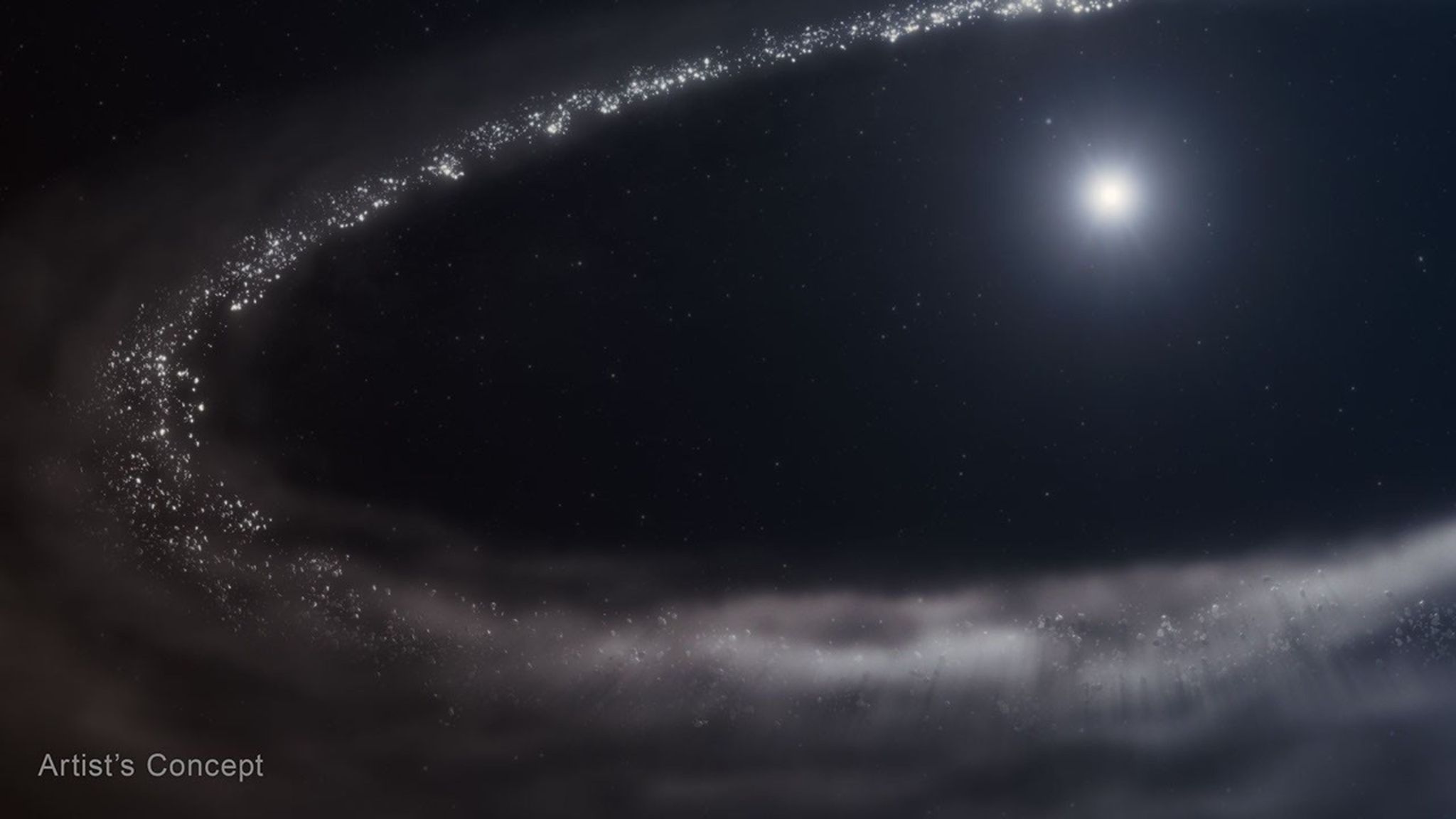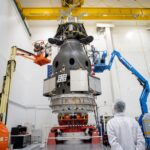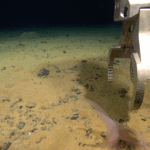Now Reading: The Atmosphere of Titan in Late Northern Summer from JWST and Keck Observations
-
01
The Atmosphere of Titan in Late Northern Summer from JWST and Keck Observations
The Atmosphere of Titan in Late Northern Summer from JWST and Keck Observations


Seasonal distribution of methane clouds in Titan’s troposphere. (a) Latitudinal distribution of clouds observed from Cassini and ground-based observatories [6, 54, 105], overlain on the zonal-mean precipitation distribution averaged over 40 Titan years of a simulation with TAM [57]. Vertical dotted lines indicate the timing of solstices (northern winter solstice and northern summer solstice, NWS and NSS) and equinoxes (northern vernal equinox and northern autumnal equinox, NVE and NAE); thin contours denote isolines of diurnally averaged top-ofatmosphere insolation, and grey shaded regions denote latitudes and times of polar night. (b) A simplified illustration of the expected atmospheric circulation during late northern summer leading to upwelling at northern mid-latitudes, which promotes cloud formation there, as observed by JWST and Keck most recently (see Figs. 4 and 5). — astro-ph.EP
Saturn’s moon Titan undergoes a long annual cycle of 29.45 Earth years. Titan’s northern winter and spring were investigated in detail by the Cassini-Huygens spacecraft (2004-2017), but the northern summer season remains sparsely studied.
Here we present new observations from the James Webb Space Telescope (JWST) and Keck II telescope made in 2022 and 2023 during Titan’s late northern summer. Using JWST’s mid-infrared instrument, we spectroscopically detected the methyl radical, the primary product of methane break-up and key to the formation of ethane and heavier molecules.
Using the near-infrared spectrograph onboard JWST, we detected several non-local thermodynamic equilibrium CO and CO2 emission bands, which allowed us to measure these species over a wide altitude range.
Lastly, using the near-infrared camera onboard JWST and Keck II, we imaged northern hemisphere tropospheric clouds evolving in altitude, which provided new insights and constraints on seasonal convection patterns. These observations pave the way for new observations and modelling of Titan’s climate and meteorology as it progresses through the northern fall equinox, when its atmosphere is expected to show notable seasonal changes.

Seasons on Titan seen by various spacecraft missions. Extended observations by Cassini (June 2004 to September 2017) may be compared to JWST (from November 2022). The early JWST observations probe a significantly different season to Cassini (late northern summer), last seen in the early 1990s. — astro-ph.EP
Conor A. Nixon, Bruno Bézard, Thomas Cornet, Brandon Park Coy, Imke de Pater, Maël Es-Sayeh, Heidi B. Hammel, Emmanuel Lellouch, Nicholas A. Lombardo, Manuel López-Puertas, Juan M. Lora, Pascal Rannou, Sébastien Rodriguez, Nicholas A. Teanby, Elizabeth P. Turtle, Richard K. Achterberg, Carlos Alvarez, Ashley G. Davies, Katherine de Kleer, Greg Doppmann, Leigh N. Fletcher, Alexander G. Hayes, Bryan J. Holler, Patrick G. J. Irwin, Carolyn Jordan, Oliver R. T. King, Nicholas W. Kutsop, Theresa C. Marlin, Henrik Melin, Stefanie N. Milam, Edward M. Molter, Luke Moore, Yaniss Nyffenegger-Péré, James O’Donoghue, John O’Meara, Scot C. R. Rafkin, Michael T. Roman, Arina Rostopchina, Naomi Rowe-Gurney, Carl Schmidt, Judy Schmidt, Christophe Sotin, Tom S. Stallard, John A. Stansberry, Robert A. West
Comments: 41 pages, 12 figures, 1 table
Subjects: Earth and Planetary Astrophysics (astro-ph.EP)
Cite as: arXiv:2505.10655 [astro-ph.EP] (or arXiv:2505.10655v1 [astro-ph.EP] for this version)
https://doi.org/10.48550/arXiv.2505.10655
Focus to learn more
Journal reference: Nature Astronomy (2025)
Related DOI:
https://doi.org/10.1038/s41550-025-02537-3
Focus to learn more
Submission history
From: Conor Nixon
[v1] Thu, 15 May 2025 18:58:18 UTC (1,776 KB)
https://arxiv.org/abs/2505.10655
Astrobiology,
Stay Informed With the Latest & Most Important News
Previous Post
Next Post
-
 012024 in Review: Highlights from NASA in Silicon Valley
012024 in Review: Highlights from NASA in Silicon Valley -
 02Panasonic Leica Summilux DG 15mm f/1.7 ASPH review
02Panasonic Leica Summilux DG 15mm f/1.7 ASPH review -
 03From Polymerization-Enabled Folding and Assembly to Chemical Evolution: Key Processes for Emergence of Functional Polymers in the Origin of Life
03From Polymerization-Enabled Folding and Assembly to Chemical Evolution: Key Processes for Emergence of Functional Polymers in the Origin of Life -
 04How New NASA, India Earth Satellite NISAR Will See Earth
04How New NASA, India Earth Satellite NISAR Will See Earth -
 05And Thus Begins A New Year For Life On Earth
05And Thus Begins A New Year For Life On Earth -
 06Astronomy Activation Ambassadors: A New Era
06Astronomy Activation Ambassadors: A New Era -
07SpaceX launch surge helps set new global launch record in 2024












